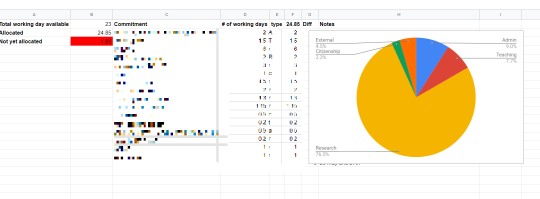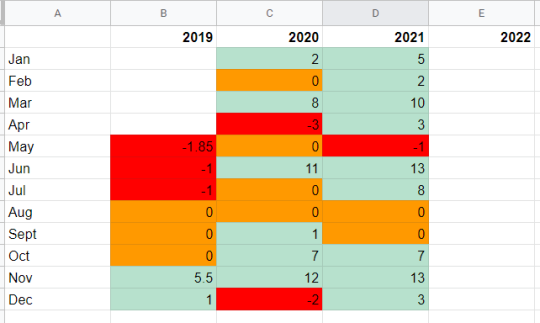I’m forever on the lookout for ways to help me better manage my to-do list. I hate the feeling of being behind and constantly missing deadlines. As I’m currently on a 3 month sabbatical and now that my responsibilities for CHI2019 are over now seems like a good time to review what i do and try to improve things for the future.
I was recently reminded of Amy Ko’s blogpost in which she describes keeping a “commitment calendar” that covers each month into the next 2 years. I remember when i first heard her talk about it on Geraldine Fitzpatrick’s podcast and wondering how on earth she managed it – it seemed like a difficult thing to do. I just couldn’t work out how you would know what you were going to be doing that far ahead. But something made me think that this might be worth trying to i sat down with my notebook and devoted 2 pages to mapping out the next 2 years.
It was actually much easier than i expected it to be. I tend to take holiday with predictable regularity dictated by school holidays – so that was the first thing i put in. And then the conferences that i usually attend also tend to follow a predictable pattern so I added those. I could then predict when i would most likely be working on the papers for those conferences, when i would have teaching and marking to do, and when my PhD students would need feedback on their upgrade reports and final thesis drafts. I’ve also got a bunch of other things already in my calendar – talks i’ve committed to giving, workshops I’m planning on attending, etc.
What was immediately visible was that I already know things that I’m going to be doing in 2 years time and which month those commitments are going to fall in. I could also see that the next 6 months look really busy! But just how busy?
I set about counting how many working days there were in each month and adding this information to the calendar. And then i started estimating how many days each commitment was going to take up. Now it was really clear that I have over-committed myself!
And then i remembered another thing I needed to add into this month! It was clear that paper commitment calendar just wasn’t going to cut-it. As more and more things that I have committed to come to mind I was going to very quickly run out of space on the sheets in my notebook. So I set about transferring it all into a spreadsheet.

And because I love a good pie chart I also worked out what percentage of my time I was spending on research, teaching, institutional citizenship (service) and external/knowledge exchange.
Next I created an overview sheet…..

…and had it automatically colour code each month as red if I am over-committed, amber if I have no capacity to take on any more, and green if there are work days still available to get work done. I was surprised to find that the month I got to the CHI conference is routinely full, as is December.
Engaging in this exercise has given me a whole new perspective on my workload. It now seems really obvious why I struggle to get things done and always feel like I’m behind. If I hadn’t done this I would have thought that October 2019 was pretty empty and that I could easily say yes to a whole host of new things. Now, when I receive a request to do something (examine a thesis, review a paper, join in on a grant with a short deadline, etc) I check the spreadsheet and actually think about how much work will be involved, and whether or not i have time to do it. If I have got time then I add it to the spreadsheet. If I haven’t, I say no. Given that i have so few “spare” days left this calendar year, I’m going to be very picky about what I say yes to using them for.
Edit: following a few requests i made a copy of my spreadsheet available if you want to try it out. Copy and paste it and then you can edit it and put in your own stuff. https://docs.google.com/spreadsheets/d/1jzfJP17AboKEKcqM9if-2fPobnHnD3bvl6E96cd95P4/edit?usp=sharing

